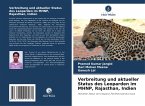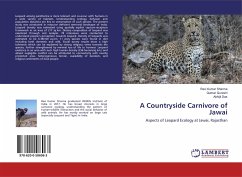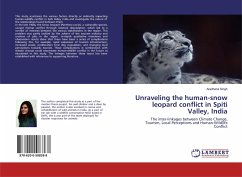In the Indian subcontinent, leopard is the most widely distributed large carnivore. Out of all the wild cats, the leopard is the most common and widely distributed species (Nowell and Jackson, 1996), which is found in almost every kind of habitat (Kitchener, 1991). Due to increasing human population, loss of habitats and poaching, leopard population has been adversely affected. The leopard is a Schedule I animal in Wildlife (Protection) Act, 1972 that gives highest level of protection to the species in India. The whole field studies carried out in Mukandra Hills National Park, Kota, Rajasthan from the month of March -June 2013. This is located in the Southern-West part of Rajasthan of India state, and the coordinates are of 25°03'-24°48' to 75°43'-75°59', 199.45 sq. km. Mukandara Hills National Park is densely wooded and is spread over a hilly terrain. Leopard were distributed throughout the MHNP and total 15 leopards present in the Park.
Bitte wählen Sie Ihr Anliegen aus.
Rechnungen
Retourenschein anfordern
Bestellstatus
Storno








